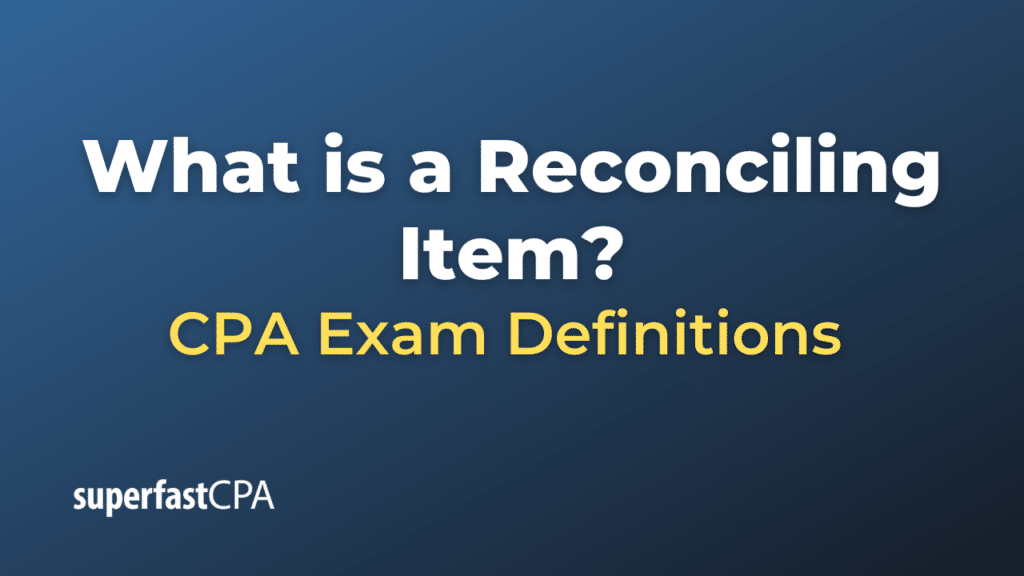Reconciling Item
A reconciling item refers to an entry or amount used to adjust the difference between two sets of records during a reconciliation process. In the context of financial accounting, reconciling items are often used to explain and adjust differences between ledger balances and bank statement balances, among other comparisons.
Reconciling items are essential for understanding and documenting why there are discrepancies between two sets of records and ensuring that the records are consistent and accurate.
Common examples of reconciling items in a bank reconciliation include:
- Deposits in Transit : Amounts that the company has recorded in its books as received, but which have not yet been credited by the bank to the company’s account.
- Outstanding Checks: Checks the company has issued and recorded in its books, but which have not yet been cashed or cleared by the bank.
- Bank Service Charges: Fees charged by the bank, which might not have been recorded in the company’s books until after receiving the bank statement.
- Interest Income: Interest earned on the bank account, which the company might not have recorded yet.
- NSF (Not Sufficient Funds) Checks: Checks that were deposited into the company’s account but later returned by the bank due to insufficient funds in the issuer’s account.
- Errors: These can be made by either the bank or the company. For example, the company might have recorded a payment as $500 when it was actually $50, or the bank might have mistakenly debited or credited an incorrect amount.
In a reconciliation statement, these items help bridge the gap between the initial and adjusted balances. Each reconciling item should be thoroughly investigated to ensure accuracy, and necessary adjustments should be made in the company’s accounting records to reflect the correct amounts.
Example of a Reconciling Item
Let’s use a bank reconciliation example to illustrate the concept of reconciling items.
At the end of July, the ABC Company’s ledger shows a bank balance of $7,000. However, the bank statement for July shows an ending balance of $6,500. ABC Company conducts a reconciliation to identify and adjust for the discrepancies.
Reconciling Items:
- Deposits in Transit:
- ABC Company deposited $1,000 on July 31st. This deposit has not been reflected on the bank statement since it was likely processed by the bank in August.
- Outstanding Checks:
- ABC Company issued a check of $800 on July 29th which has not been cashed by the recipient yet, and therefore, not cleared by the bank.
- Bank Service Charges:
- The bank statement shows a service charge of $50 that ABC Company was not aware of until they received the statement.
- Interest Income:
- The bank statement shows interest income of $50. ABC Company hasn’t recorded this in their ledger yet.
- NSF (Not Sufficient Funds) Check:
- A customer’s check amounting to $200, which was previously deposited and recorded, was returned due to insufficient funds.
Reconciliation:
- Starting Ledger Balance (as per ABC Company): $7,000
- Add:
- Deposits in Transit: +$1,000
- Deduct:
- Outstanding Checks: -$800
- Bank Service Charges: -$50
- NSF Check: -$200
= Adjusted Ledger Balance: $6,950
- Starting Bank Statement Balance (as per bank): $6,500
- Add:
- Interest Income: +$50
= Adjusted Bank Balance: $6,550
After considering the reconciling items, the adjusted ledger balance stands at $6,950, and the adjusted bank balance is $6,550, resulting in a difference of $400. ABC Company would need to investigate further to identify any additional reconciling items or errors that account for this discrepancy.
This example illustrates the concept of reconciling items and how they are used to adjust and align two sets of records.













